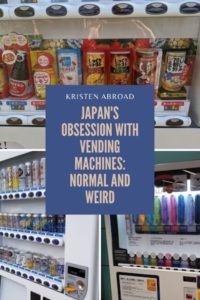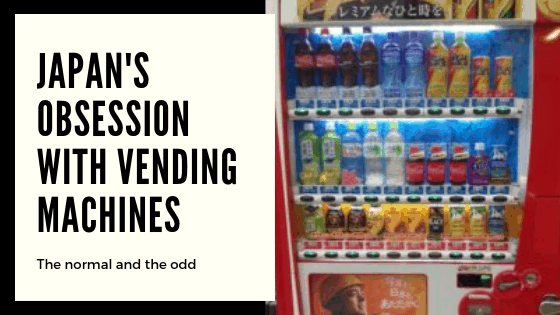As I was researching for this post, it started to seem odd to me that when people travel to Japan they seem so enamored by what seems like a vending machine on every corner. Or even by the types of vending machines. Meanwhile, the UK has created the world’s first pizza vending machine, where is that in my life?! That’s an automatic alfresco dining scenario.
None the less, due to the density of Japan, it feels like there are vending machines everywhere. To the point that I’ve heard people say they thought there were more vending machines than people (there aren’t). Let’s take a look into the world of vending machines in Japan.
- How to say vending machine in Japanese
- First Vending Machine in Japan
- Which country has the most vending machines?
- Japanese Laws Governing Vending Machines
- Blending into the environment
- How to use vending machines in Japan
- How do you tell the difference between Hot and Cold Options in vending machines in Japan?
- Vending Machines Offerings
- Pin this for later
[Editor’s Note: This post was originally published in November of 2016 and has been updated for freshness, accuracy, and comprehensiveness.]
How to say vending machine in Japanese
The word for vending machine in Japanese is 自動販売機 (じどうはんばいき, jidouhanbaiki).
- 自動 (jidou) means automatic
- 販売 (hanbai) is the word for sales or selling
- 機 (ki) is machine
Automatic selling machine sounds more fun then a vending machine.
First Vending Machine in Japan
The first vending machine in Japan was invented by 俵谷高七 (Koushika Tawaraya, reading thanks to Kotobank, not Google) in Meiji 21 (or 1890) to dispense cigarettes. Those all have disappeared with time.
The oldest existing vending machine in Japan is the 自動郵便切手葉書売下機 or automatic postage postcard vending machine from 1904.
It combined stamp sales, postcard sales, and posting efforts (talk about making someone’s job obsolete). You can see it at the Postal Museum in Tokyo.
Which country has the most vending machines?
The United States has everyone beat in terms of the number of machines. Pulling in nearly $26 billion dollars in sales in 2018 with an estimated 3.5 million vending machines nationwide as of 2016. That number has taken a drastic decline thanks to more “micro-markets” but still tops everyone else.
Side note: I think the organization for vending machines in America being abbreviated as “NAMA” (National Automatic Merchandising Association) is hilarious. Remember how to order a beer? Nama bieru onegaishimasu!
The European Vending & Coffee Service Association (EVA) estimates about 4 million machines in Europe but that, of course, is over multiple countries. However, they are nowhere near America’s sales at $15 billion.
Japan? If you count up all of the food, beverage, and daily necessity vending machines in Japan you end up with about 2.8 million vending machines in Japan as of 2019. This includes tickets like you get for ramen machines. You start adding ATMs and coin lockers and other “service” machines and it climbs more, which if you are on the internet and see numbers closer to 5 million, that’s what they are counting.
We want apples to apples though and all of those train station coin lockers throw off the numbers!
So while the US beats out Japan in the number of machines, Japan with its population of about 125 million people and additionally the landscape differences (you can think of Japan as the size of the east coast) and you have a much higher density of vending machines in Japan.
When it’s so easy to come by a vending machine, it’s no wonder Japan does win out on sales. I personally contribute greatly to that, it’s just too easy to grab a drink!
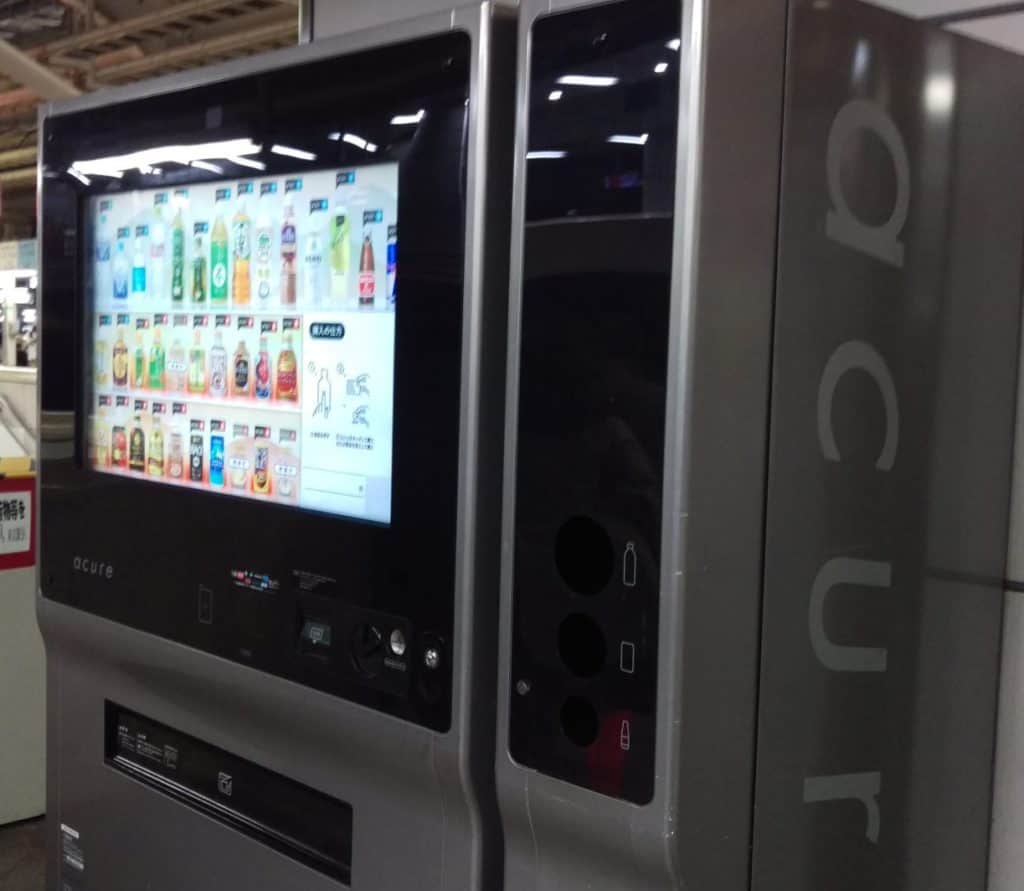
Japanese Laws Governing Vending Machines
While it may surprise you to see alcoholic vending machines on the streets, there are a fair amount of laws that go into vending machines in Japan.
For vending machines that dispense into a cup, like the one for coffee that is in my office, you have to get a license for a coffee shop to meet the Food Sanitation laws! Similarly, food vending machines are basically mini restaurants in the eyes of the government.
You’ll often see milk vending machines in onsens. Again, falls under strict food sanitation laws.
So you betcha that liquor and tobacco products fall under scrutiny. For each, there are built-in card readers to “prove” your age. Though honestly, I’ve seen plenty of beer machines out “in the wild” that the age checker conveniently wasn’t working. You’ll also see beer vending machines in hotels without this either. Not sure how they get around the law on that one or if I just blew their cover!
Blending into the environment
Believe it or not, there are regulations on the designs of vending machines in Japan. You wouldn’t think that sometimes with some of the designs I’ve seen around. But this allows them to blend into the environment to be more in harmony with the surrounding landscape.
However, that doesn’t mean you don’t see some really cool designs from time to time.
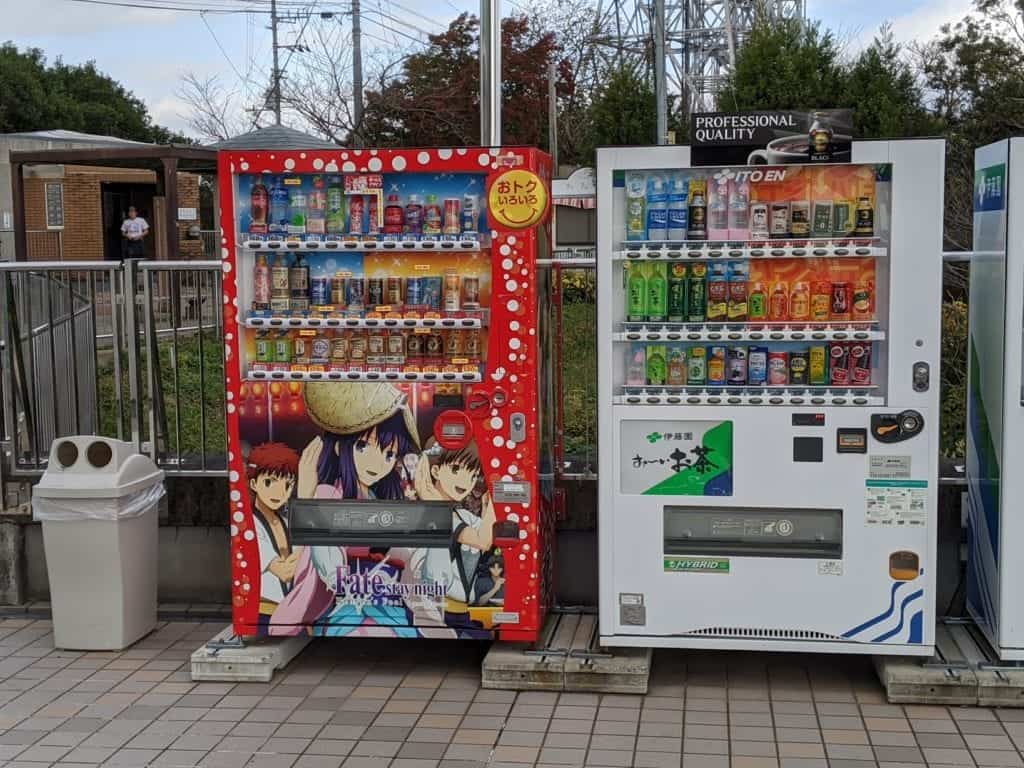
How to use vending machines in Japan
One thing to keep an eye out for are the vending machines that give you instructions (pictorially often) for how to use them. Something that always cracks me up because it seems so basic to me. Vending machines have been around for thousands of years after all!
You can use any coin in most machines in Japan except for 1 and 5 yen coins. Paper money normally stops at 1000 yen unless it’s a ticket vending machine for ramen and then it may take larger bills but always check the markings.
If you at a train station, more and more these days are taking IC Cards like PASMO as a form of payment making them even more convenient.
Also to note, there are many fancy electronic touch screen versions! They may catch you off guard but they are very straight forward.
How do you tell the difference between Hot and Cold Options in vending machines in Japan?
You know it is turning to winter when the vending machines start offering hot items. Yes, you read that correctly, hot. Some machines are dual-zone so that cold items are still kept around 5°C and hot canned beverages are sold around 55℃.
The hot items aren’t just life-saving coffee (Japan’s coffee stores don’t open nearly as early as they do in the states) but drinkable soups as well.
Which not only warms you up but can make a great hand warmer! Converting to English units, that’s about 130°F! They can also hurt so be careful!
How do you tell the difference? Near the price will be a red or blue colored mark. Red for hot, blue for cold. They also have the words “あったかーい” (attaka- i, the last vowel dragged out for effect?) means “warm” or “pleasantly hot”. つめたーい (tsumeta-i, again, vowel drawn out for effect) means “cold” or “chilled”.
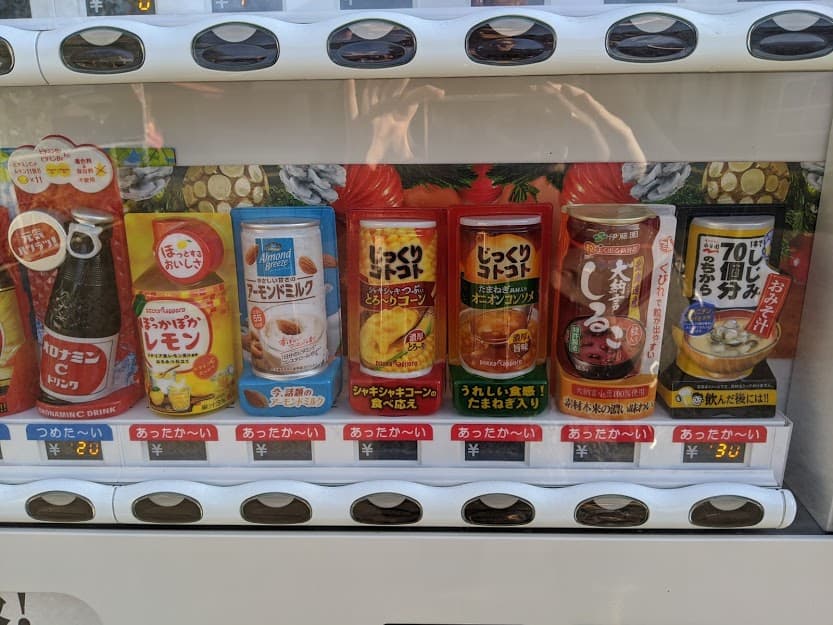
Vending Machines Offerings
Name a business in Japan and there is probably a suitable vending machine option for it. Drink machines are all over the place. Which is great in the hot days of summer and your dying of thirst from all of the urban hiking you are doing.
There are special event vending machines like you’ll see at the Pikachu Outbreak in Yokohama selling Pokemon items. Plus the rumored goods in Akihabara.
Really, if you can think of it, it probably exists. Beer, sake, cigarettes, ice cream, clothing (including underwear and ties), trading cards, umbrellas (handy in rainy season), even books. There are vegetable vending machines, instant ramen machines (and you don’t just find those at the Cup Noodle Museum!). I’ve seen ones selling bananas.
Food of all sort really. Onigiri and bentos being important! Energy drinks and “liver shots” (vitamins to keep you “healthy” during a night of nomikai or drinking parties).
Keep your eyes peeled, see what you find.
Pin this for later
